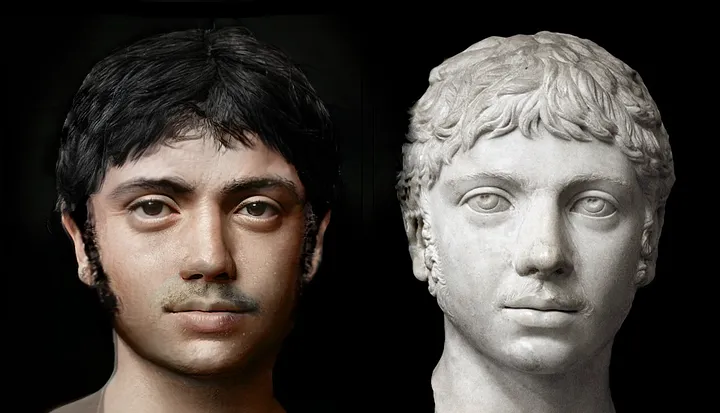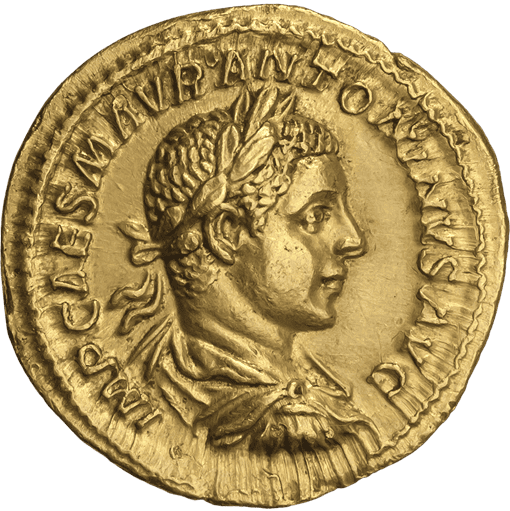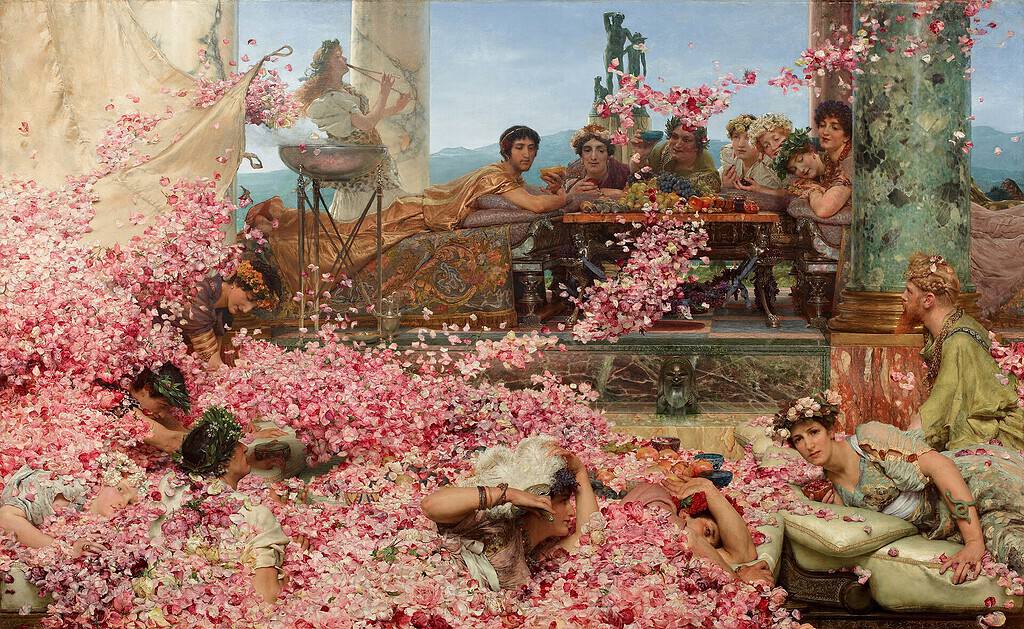
Marcus Aurelius Antoninus, better known by the nickname Elagabalus, was the Roman Emperor from 218 to 222. He was still a teenager when became the ruler of the greatest empire in the world of the time, but his deeds became infamous throughout the realm. Or rather, her deeds.
The North Hertfordshire Museum in England has changed the pronouns it uses for a coin of Elegabalus in its collection, now referring to the emperor as a trans woman, using “she” and “her”. As crazy as it sounds, that’s not an unreasonable take.
A truly bizarre emperor challenging gender roles
Nero and Caligula are often considered to be the worst Roman Emperors, but Elagabalus would give them a run for their money. In just four years, the emperor managed to instill a culture of debauchery, financial waste, and promiscuity that is still infamous to this day.
Elagabalus was born in today’s Syria. In early youth, they (let’s go with the pronoun “they” until historians settle this) had served as head priest of the sun god Elagabal. Upon becoming emperor, Elagabalus replaced the Roman pantheon of gods with the Elagabal. But that’s only the start of his many transgressions.
They married four women and a man. They offered lavish gifts and favors to male courtiers and purchased female harlots. They did tours of brothels and conducted elaborate orgies.
That is, still, only the start.
Elagabalus openly challenged gender roles, sometimes in very controversial ways. They frequently wore female wigs and makeup and bathed with women. The emperor preferred to be called ‘domina‘ (lady) rather than ‘dominus‘ (lord). This is essentially the Roman version of correcting someone’s pronouns, says Zachary Herz, assistant professor of classics at the University of Colorado in Boulder, to The Guardian.
The emperor also bathed with women and infamously, prostituted themselves to men. There is even one anecdote that Elagabalus offered vast sums of money to any physician who could give them a vagina.
But perhaps the strongest evidence comes from historian Cassius Dio. Dio left several writings related to Elagabalus, including a part on the emperor’s latest marriage, to a man. The historian wrote that the emperor “was bestowed in marriage and was termed wife, mistress and queen”.
Judging from all of this, the museum’s decision to reclassify the emperor’s pronouns is more than justified. However, things are rarely straightforward in history.
Uncertainty and hit pieces

Much of what we know about Roman history comes from, well, Roman historians. Here’s the thing: Roman historians hated Elagabalus. It’s not hard to understand why: here’s a teenager coming to lead the most powerful empire in the world, focusing more on prostitution and parties and changing religion than actually ruling. Reading historic writings on Elagabalus is a bit like reading hit pieces in a local tabloid. There’s some truth in there for sure, but it’s hard to take everything literally.
In fact, most historians seem to believe that Elagabalus didn’t do many of the things historians claim they did. Using effeminate language and words would have been a way to discredit and undermine the emperor. References to wearing makeup and prostitution could have done the same.
In fact, Dio wrote most of his work on Elagabalus after the emperor was killed and disgraced, and slander was common in such writings. To add further insult, a common Roman stereotype at the time was that people from Syria were effeminate and not strong and masculine like the ‘real’ Roman men. So in reality, there’s no way to know for sure just how many of these things Elagabalus actually did.
It is clear, however, that he married a man. But is there reason to see this as more than just a homosexual practice, which would have been relatively common in ancient Rome?
Fluid gender roles in the Roman Empire

The Romans were, stunningly, aware of gender fluidity. There are several examples of changing pronouns in Roman history, although this process usually references myth and legend rather than living people. There’s a reason why we’re so fascinated with Romans — they were way ahead of their time.
But whether or not Elagabalus was truly a trans woman is less clear. Being trans is by no means a new phenomenon, but we struggle to describe and accept it as a society even today. Ancient Romans were remarkably open about gender, but this would not have been an easy thing to settle, particularly in the case of a salacious teenage emperor.
But historians say we should be wary of attributing modern concepts to historical figures.
“We don’t know what Elagabalus was like. We don’t know how Elagabalus saw himself. But we have portraits and coins that all look male, that portray him with male facial hair, male features, and in garments that would have been understood as male within Elagabalus’s culture – including the coin that the museum has at the center of its display,” Herz told The Guardian.
While “there is a long history of people who have been expected to be good at being a man or being a woman and have had a hard time with that”, says Herz, “I worry that when we tell our students they should care about Elagabalus because she’s trans or because they’re non-binary – because they fit a modern category that our students use for themselves – we’re depriving them of the richness of history.”
A strange enigma
The number of bizarre stories about the emperor is far too great to sum up here. Among others, it is said that they:
- never wore the same shoes twice;
- took a whale, weighed it, and then sent their friends its weight in fish;
- had elaborate banquets with bizarre foods like camels-heels and flamingos;
- once killed some guests by suffocating them with rose perfume.
This is some of the craziest stuff that’s ever been described by historians, and it only happened in four years. We can’t know for sure if these events actually happened or if they’re just myths and legends, but it’s clear that Elagabalus quickly became unpopular.
Elagabalus’ eccentricity and debauchery alienated intellectuals and soldiers of the time in Rome. Ultimately, he was assassinated by order of their own grandmother, who killed Elagabalus’ mother as well. The Praetorian Guard murdered Elagabalus and their mother, decapitated their bodies, and threw them in the River Tiber. Elagabalus was just 18.
Elagabalus’ reign, although brief, casts a long and complex shadow over Roman history. Most historians don’t seem to class the Roman emperor as a trans woman. At least some of the things ascribed to Elagabalus seem strikingly modern. The decision by the North Hertfordshire Museum to use female pronouns highlights a modern reassessment of historical figures through the lens of contemporary understanding of gender and identity.
However, it’s crucial to remember that our interpretations are constrained by the biases and limitations of ancient sources, as well as our contemporary perspectives.
Elagabalus is referred to as ‘A tragic enigma lost behind centuries of prejudice’ by historian Warwick Ball. Perhaps herein lies the real story. The legacy (whether as a trans figure, a gender non-conforming individual, or simply a young and disdained ruler) underscores the complexity and fluidity of human identity across ages. Figures like Elagabalus remind us of the endless nuances in the human narrative. Perhaps herein is something we can learn from that today as well.


